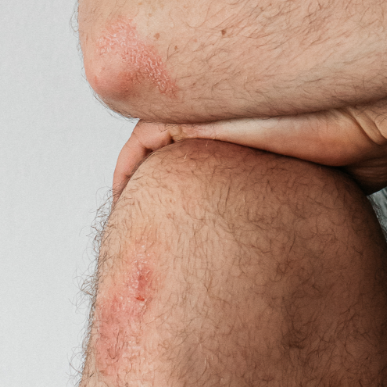Why do we get dry itchy skin?
As the cells shrivel due to dehydration, they leave tiny gaps between them where bacteria and other nasties can potentially squeeze through. Not only does this cause further irritation, but it can lead to infection in severe cases. That’s why it’s vital that whenever we touch fragile skin, we don’t aggravate the irritation and risk transmitting bacteria.
Follow these simple rules to get the best from your moisturiser and find out how to treat eczema and dry skin conditions:
 Switch to emollient only
Switch to emollient only
Emollient is really just a fancy word for saying medical moisturiser and you’ll find them at your pharmacist over the counter. So, what we mean here is that you should substitute all the products you normally use on your skin for emollients – that includes switching your regular soaps and shower gels for a cleansing cream which gently washes and hydrates at the same time.
A lot and often
Forget a little and often, with dry skin and eczema you want to apply moisturiser generously at least twice a day, if not three or four times. Slather on a thick layer first thing in the morning, after a shower, when the skin is still damp to trap extra moisture. The cream will be visible at first and tacky but wait a few minutes and it will absorb into the skin.
Resist temptation
The itching of dry skin and eczema can be unbearable at times, but it’s critical that you resist at all times especially when treating eczema! The more you scratch, the more the skin becomes irritated and then the more it itches. It’s a vicious cycle! Consider wrapping severely dry skin or eczema in bandages to help reduce temptation and try wearing gloves to protect hand eczema.
Keep it clean
It almost goes without saying, but you should touch your problem skin as little as possible while it is healing. When you need to touch it, for example to apply your moisturiser, always make sure your hands are clean to reduce the risk of infection.
Keep it up
To prevent future flare-ups of dry skin or eczema it’s a good idea to keep applying emollients twice daily. This provides added hydration and protection for the skin, helping prevent irritation.
Avoid open flames
It’s not a good idea to stand close to open fires anyway but be extra cautious when using emollients as their ingredients can be flammable. To reduce the risk, wash your clothes regularly to avoid build-up.
Above all be patient and persistent. Regular use of emollients is one of the most important steps you can take in your treatment of eczema and dry skin. If you’re unsure which emollient is right for you, click here for an introduction to different moisturisers, from the best ointment for eczema to different types of eczema treatment cream.
The full Cetraben range can be found in Boots, LloydsPharmacy and Tesco stores nationwide.




